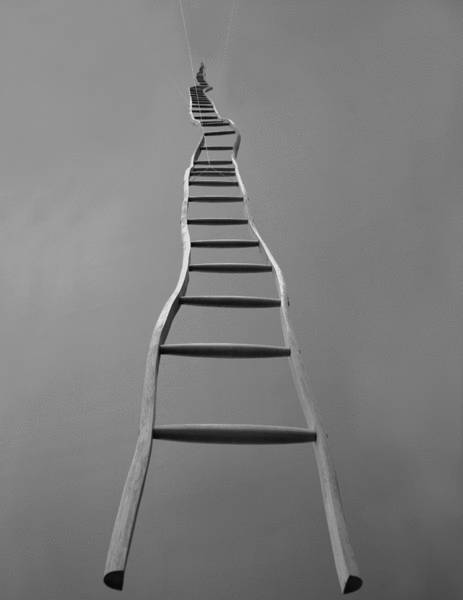Hudson Valley based sculptor Martin Puryear took a path into sculpture making that was anything but direct. Born in 1941, the African-American artist was raised in then still-segregated Washington, DC. Coming of age in the turbulent 1960s, he studied painting at Catholic University there before signing on to a two-year hitch with the Peace Corps in Sierra Leone in 1964. Reconnecting with his (presumed) West African roots, he became acquainted with local craft traditions, the weavers and potters who produced primarily utilitarian objects—vessels, weavings, and other basic forms that later became essential to his approach in sculpture.
Before returning to the States, Puryear spent two more years studying printmaking in Stockholm, pursuing sculpture on his own. Thoroughly absorbing both the modernist aesthetic and the key construction techniques employed in the furniture factories of Sweden and Denmark, all the essential elements of his unique artistic style were in place when he came back home in 1968.
Using a vocabulary of the most simple, stripped-down forms, most often executed in wood, Puryear’s sculptures emphasize the manual process of their making. Dense with psychological and intellectual references, these abstracted forms open surprising new windows on issues of identity, culture, and history. Partaking of truly global influences, yet always fundamentally grounded in the purity of its materials and the touch of its maker, Puryear has forged a bold body of work that both underscores and ultimately transcends his African-American heritage.
Ladder for Booker T. Washington began with the idea to play with forced perspective, to fool the eye into believing that the work continued much further in depth than it actually does. Puryear began by splitting a slender, 36-foot tall, ash tree that had taken on an unusual, zig-zag growth pattern, using the two halves of the tree as the side rails of the ladder. Connecting them with maple rungs, the ladder itself is balanced delicately atop a towering wall, leaving the rungs at the bottom floating suggestively a foot or so off the floor.
The title of the piece actually came after the work was made, as is most frequently the case with Puryear’s work. Reflecting on the metaphorical qualities made real in the finished piece, he recognized a connection to what he saw as “the kind of gradual, illusory notion of upward progress that Washington encouraged blacks to adopt in the nineteenth century against an overwhelming set of obstacles to our advancement.”
This comment appears in an interview by Richard J. Powell with the artist in the catalogue for his new, three-decade retrospective, which spans his career from his first solo museum show in 1977 to the present, opening at the Museum of Modern Art on November 4. On view in New York through January 14, 2008, this major exhibition will then travel to Fort Worth, Washington, and San Francisco.












